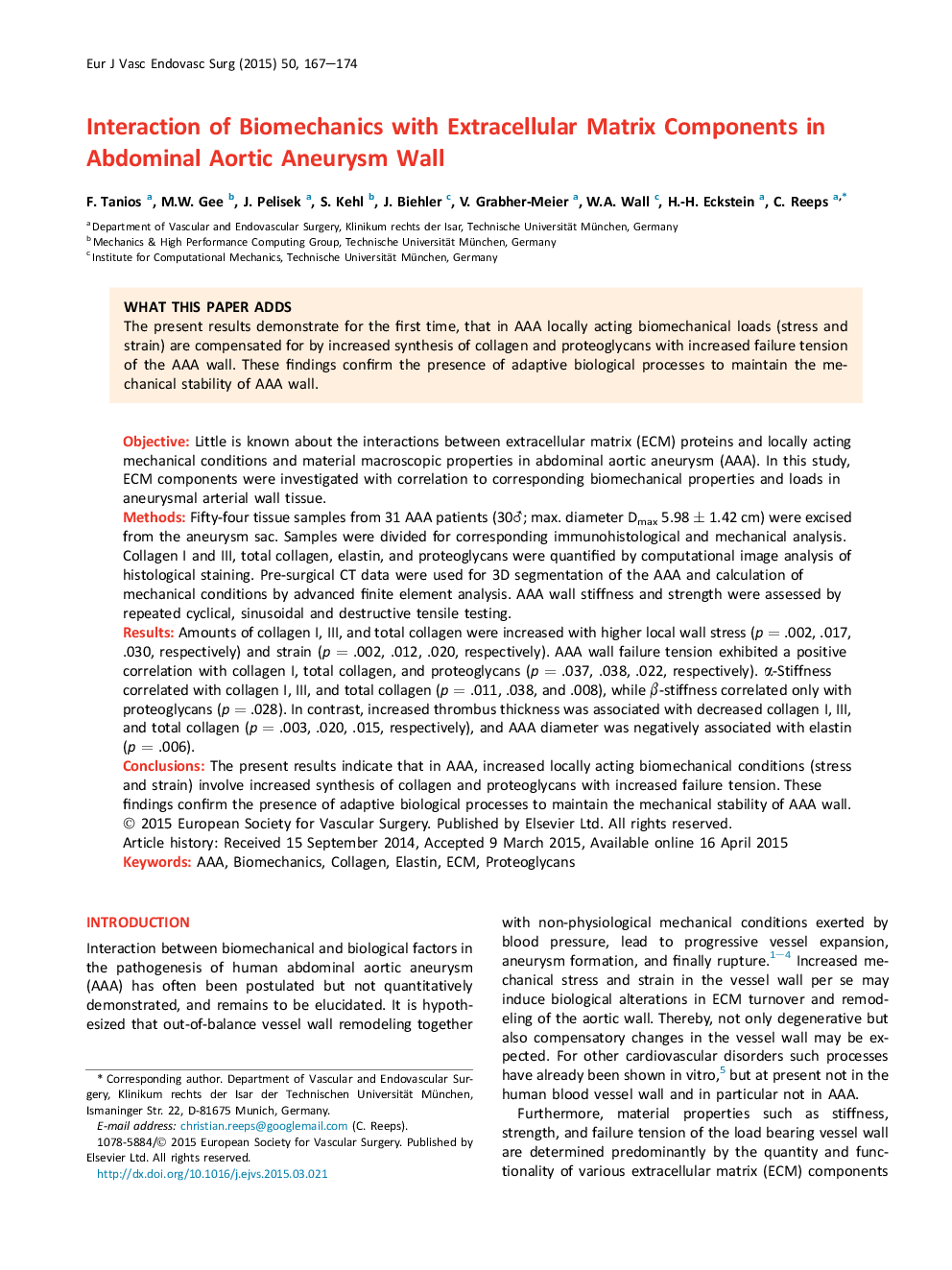| کد مقاله | کد نشریه | سال انتشار | مقاله انگلیسی | نسخه تمام متن |
|---|---|---|---|---|
| 2911819 | 1575439 | 2015 | 8 صفحه PDF | دانلود رایگان |
ObjectiveLittle is known about the interactions between extracellular matrix (ECM) proteins and locally acting mechanical conditions and material macroscopic properties in abdominal aortic aneurysm (AAA). In this study, ECM components were investigated with correlation to corresponding biomechanical properties and loads in aneurysmal arterial wall tissue.MethodsFifty-four tissue samples from 31 AAA patients (30♂; max. diameter Dmax 5.98 ± 1.42 cm) were excised from the aneurysm sac. Samples were divided for corresponding immunohistological and mechanical analysis. Collagen I and III, total collagen, elastin, and proteoglycans were quantified by computational image analysis of histological staining. Pre-surgical CT data were used for 3D segmentation of the AAA and calculation of mechanical conditions by advanced finite element analysis. AAA wall stiffness and strength were assessed by repeated cyclical, sinusoidal and destructive tensile testing.ResultsAmounts of collagen I, III, and total collagen were increased with higher local wall stress (p = .002, .017, .030, respectively) and strain (p = .002, .012, .020, respectively). AAA wall failure tension exhibited a positive correlation with collagen I, total collagen, and proteoglycans (p = .037, .038, .022, respectively). α-Stiffness correlated with collagen I, III, and total collagen (p = .011, .038, and .008), while β-stiffness correlated only with proteoglycans (p = .028). In contrast, increased thrombus thickness was associated with decreased collagen I, III, and total collagen (p = .003, .020, .015, respectively), and AAA diameter was negatively associated with elastin (p = .006).ConclusionsThe present results indicate that in AAA, increased locally acting biomechanical conditions (stress and strain) involve increased synthesis of collagen and proteoglycans with increased failure tension. These findings confirm the presence of adaptive biological processes to maintain the mechanical stability of AAA wall.
Journal: European Journal of Vascular and Endovascular Surgery - Volume 50, Issue 2, August 2015, Pages 167–174
